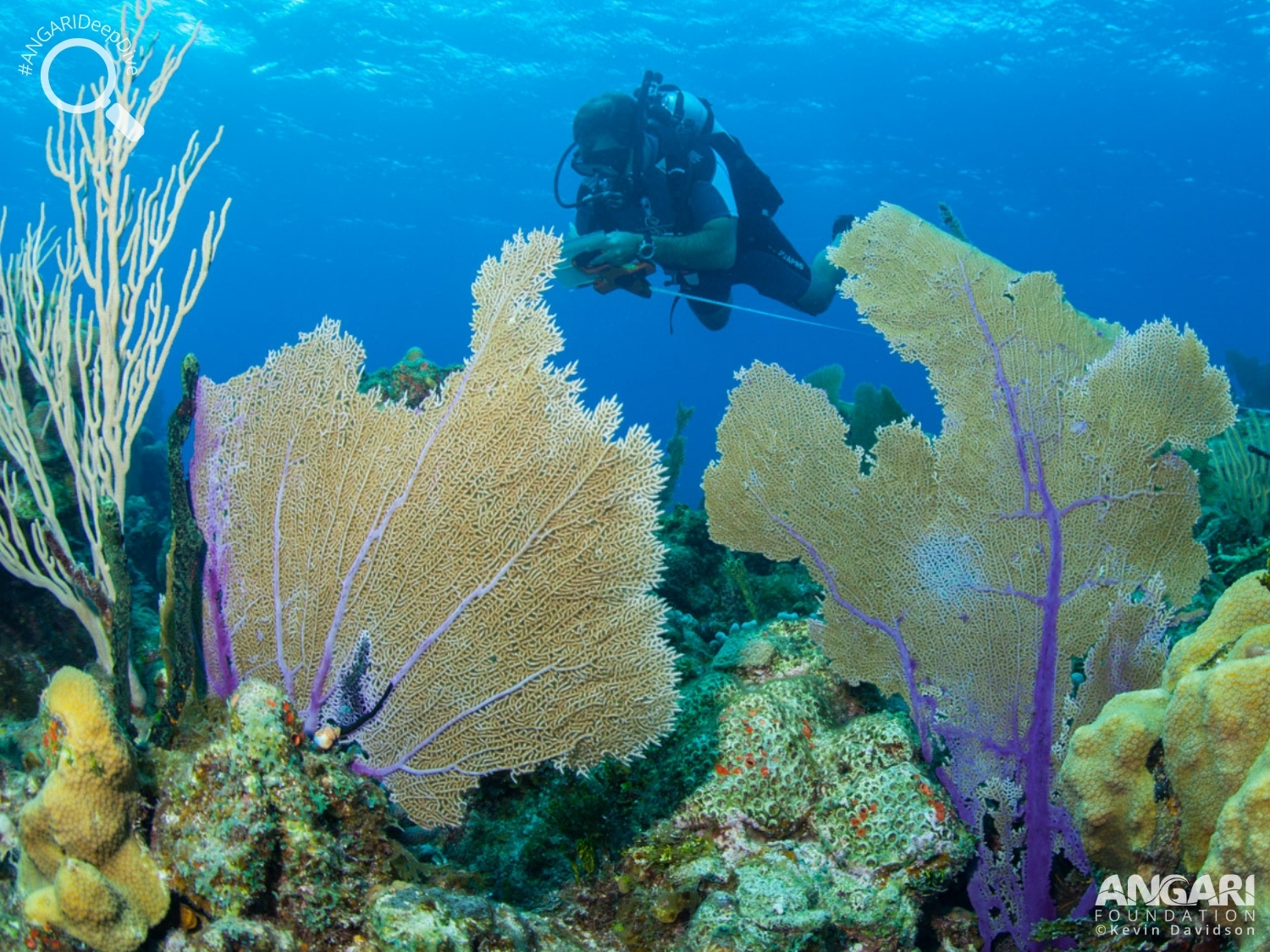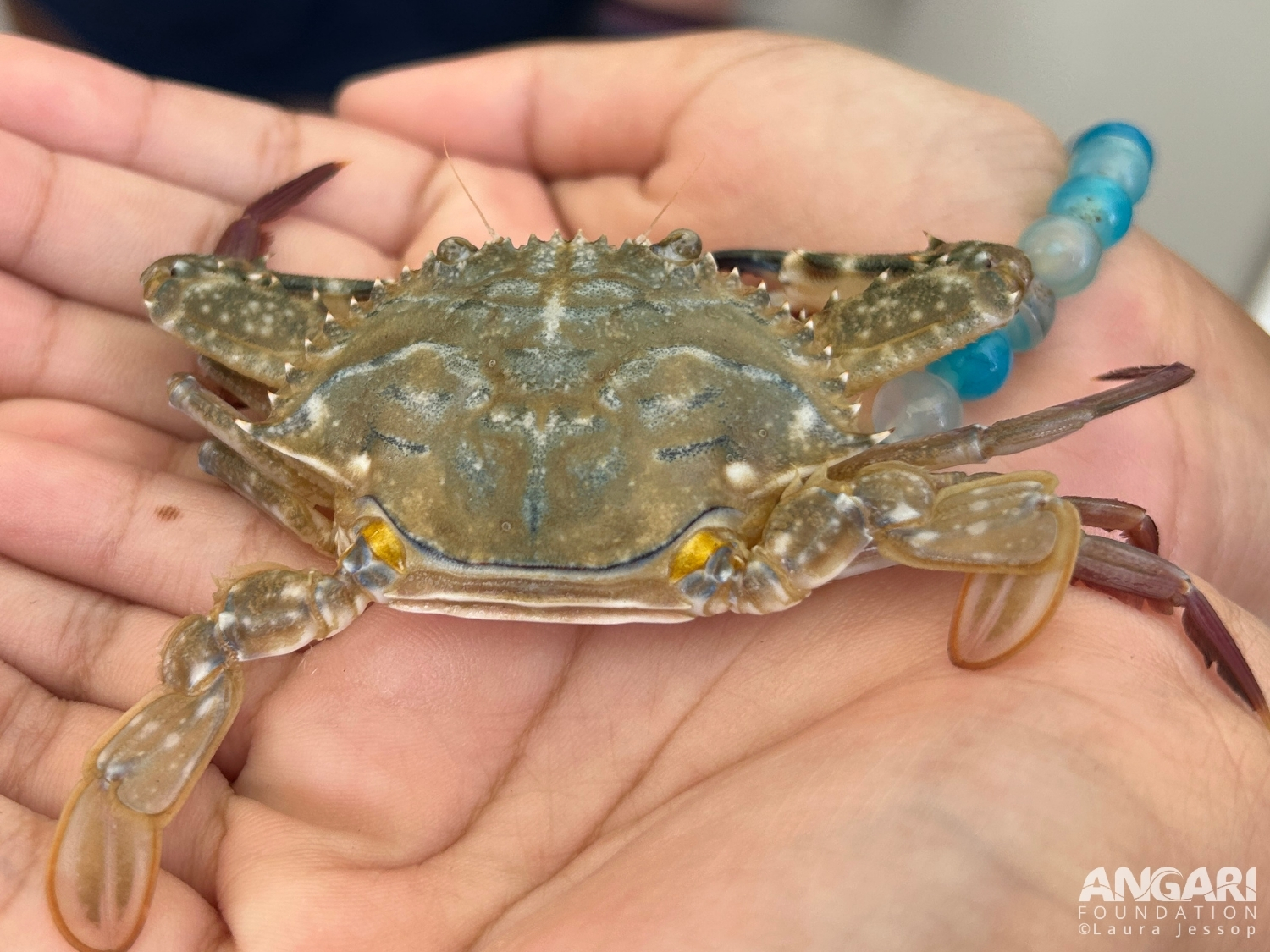Common sea fans are commonly found on coral reefs and can be identified by their purple tissue.

Caribbean Reef Squid (Sepioteuthis sepioidea)
The Caribbean reef squid (Sepioteuthis sepioidea) is a member of the cephalopod family with distinct tentacles and an ever-changing body of colors and patterns. Just like their relatives, they only lay one batch of eggs and shortly after will pass away, but not before have completed their protective parenting duties.
#1: Where does the Caribbean reef squid live?
Caribbean reef squid can be found in the ocean waters of Florida down to the northern tip of South America. Usually, they are observed among the shallows in and around reefs.

#2: Caribbean reef squid are artists.
Typically, Caribbean reef squid appear mottled with brown coloring on their dorsal side and whitish coloring on the ventral side. However, their body can quickly change in colors and textures to communicate with friends and foes.
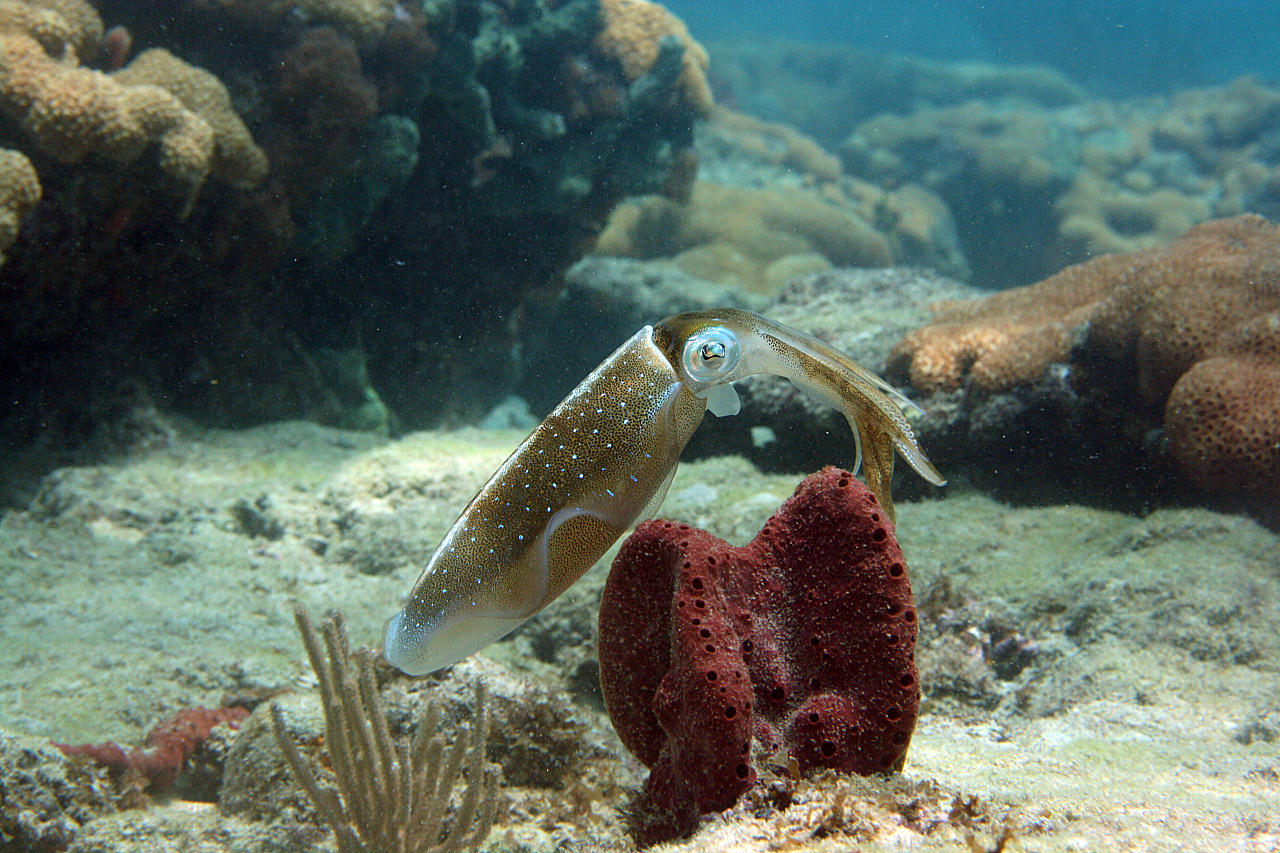
#3: How does the Caribbean reef squid fish?
To catch their prey, the Caribbean reef squid uses its tentacles to hook and grab its prey, like shrimp. They have a few long tentacles which have a club-like end, and these are used to grab the prey and pull it into their mouths where they use their beaks to chew.
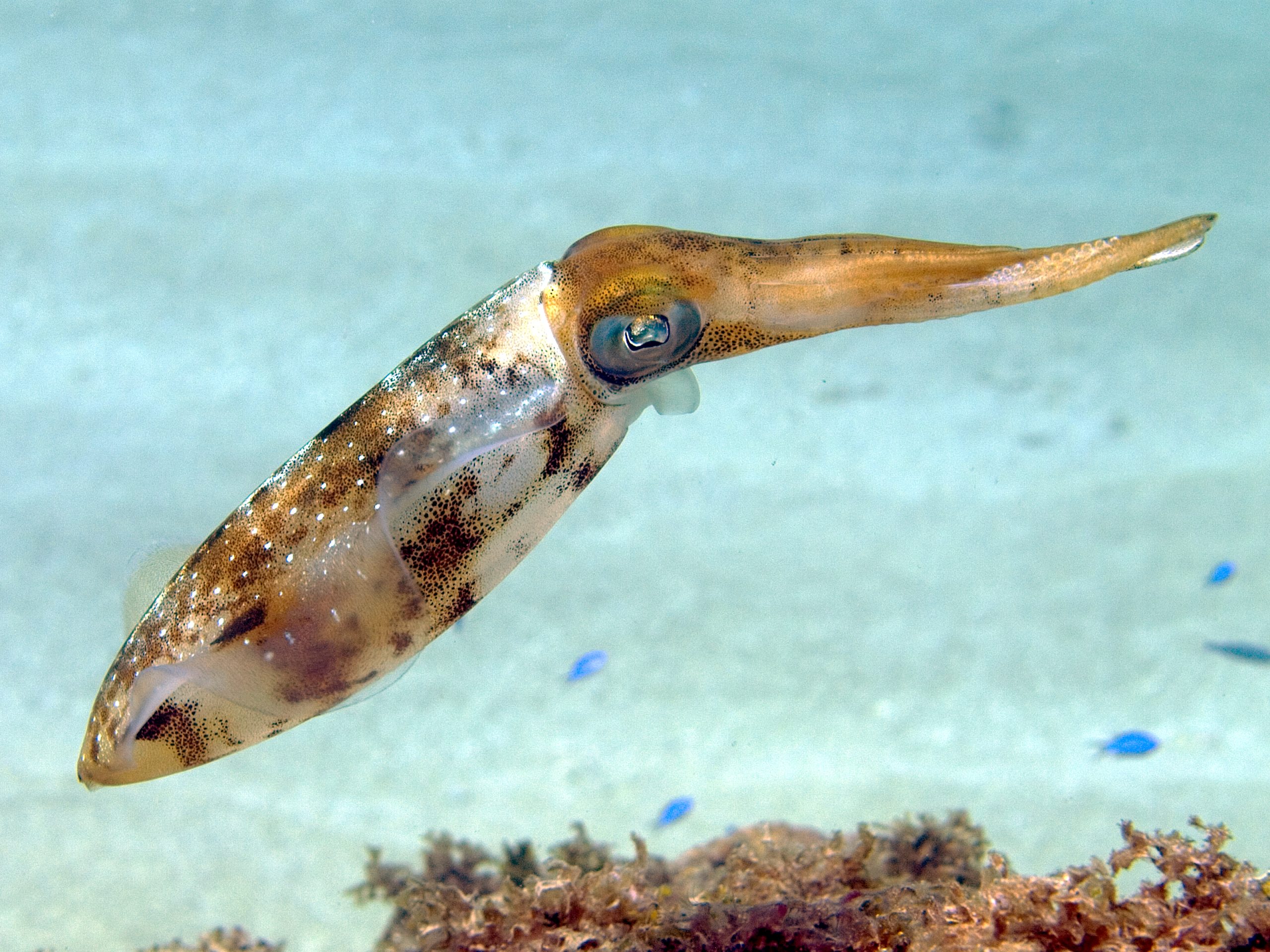
#4: Caribbean reef squid form shoals.
Caribbean reef squid are commonly found congregating together in groups called shoals. Individuals gather together largely based on their size and lifestage.
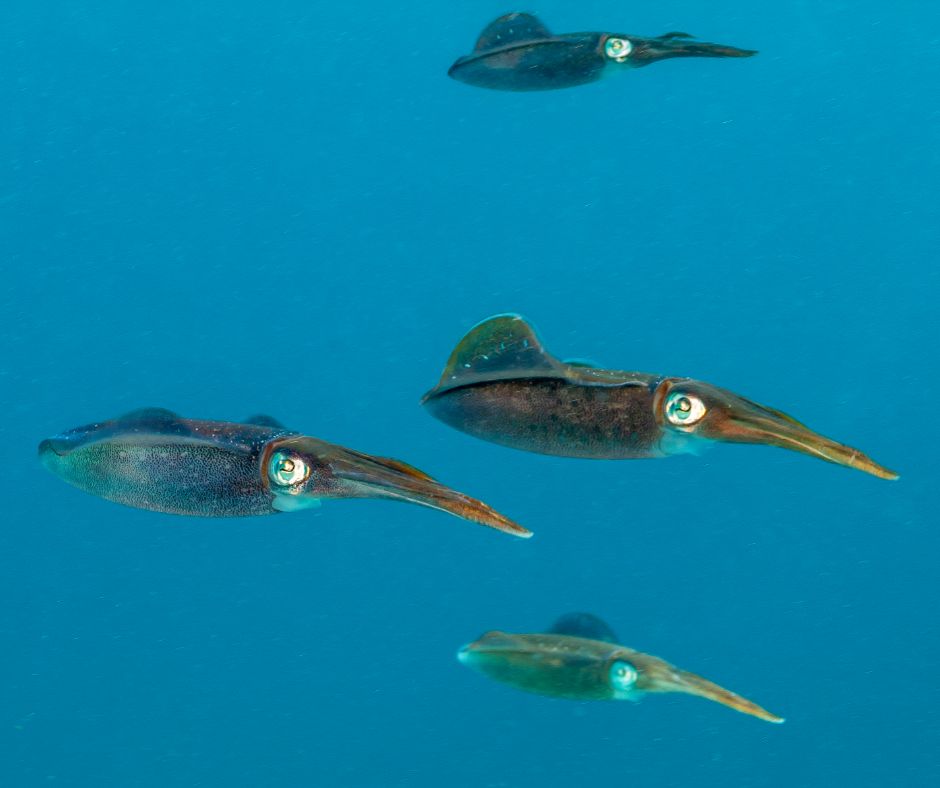
#5: Caribbean reef squid are skilled at avoiding predators.
Caribbean reef squid position themselves in the water column where they can be protected from predators attacking from either above and below. This is why you won’t find them on the ocean floor or at the surface. If you’ve ever encountered them in the wild, they’re not easy to spot!
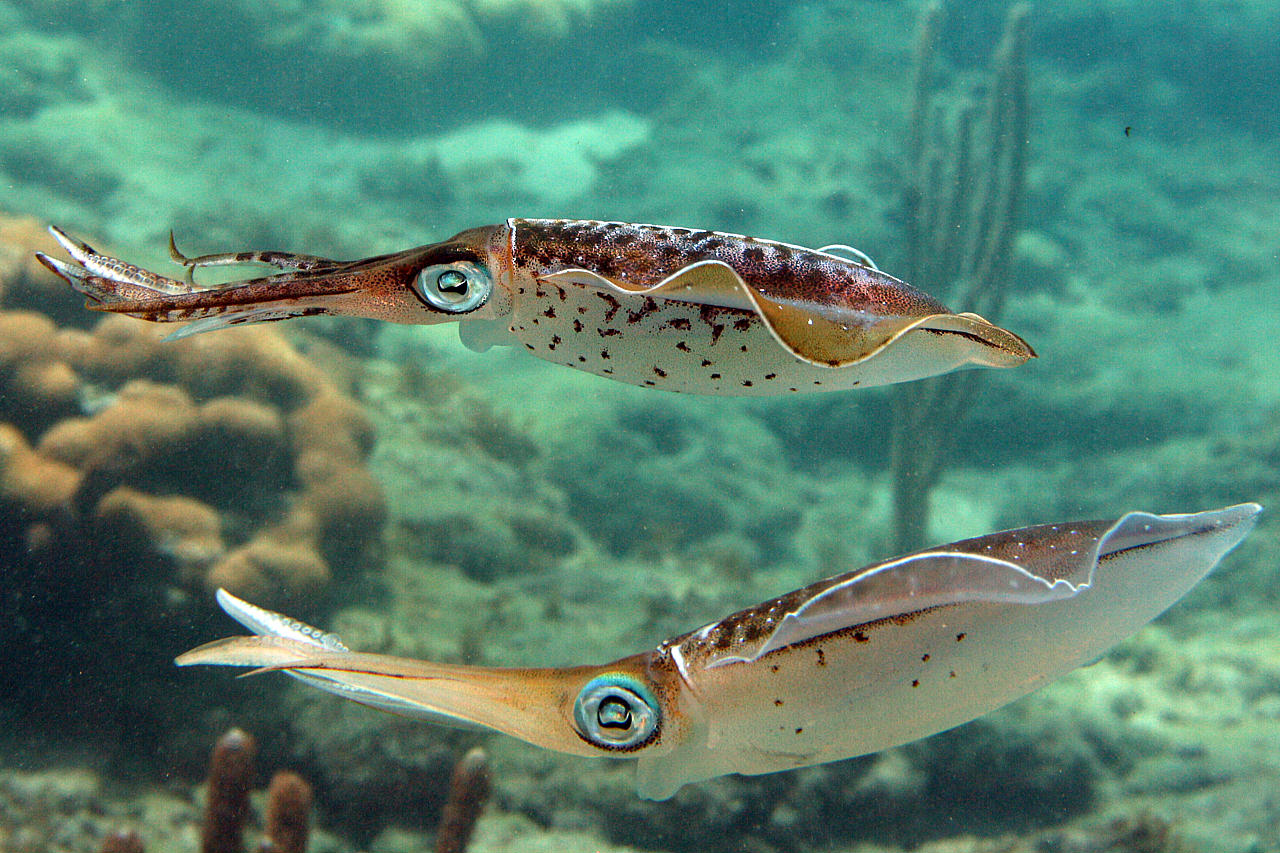
#6: Where do the young Caribbean reef squid like to hang out?
If you find yourself snorkeling along a turtle grass meadow keep your eyes peeled for juvenile Caribbean reef squid. They spend a lot of their time in and around these seagrass beds as they offer both protection and food.
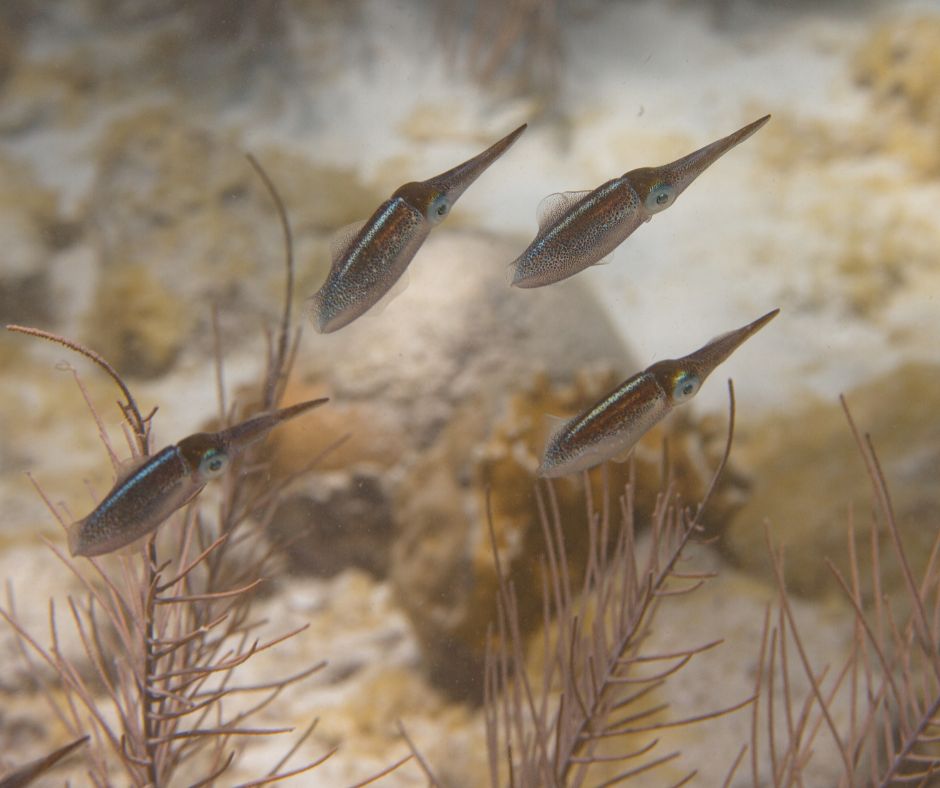
#7: Caribbean reef squid have fins.
The smallest Caribbean reef squid are semi-planktonic, which means they are only partially able to swim and rely heavily on the ocean currents for transport, because of their small fins. These squid have two fins on their mantles near the pointed end of the body. The fins are used as stabilizers and to propel the squid.

#8: Caribbean reef squid are talented communicators!
Caribbean reef squid communicate using a variety of color and texture changes. They are able to change colors and textures because of their chromatophores. Chromatophores are organs present in the skin of a squid that contain little sacs of pigment. At will, the squid can send an electrical signal to open the pigment sac, causing their skin color and texture to change. Male Caribbean reef squid use this technique to attract females by turning red and to warn off other males by turning white. What is even more amazing is that the can even split the coloration of their bodies down the middle to attract a female on one side and repel a male on the other!
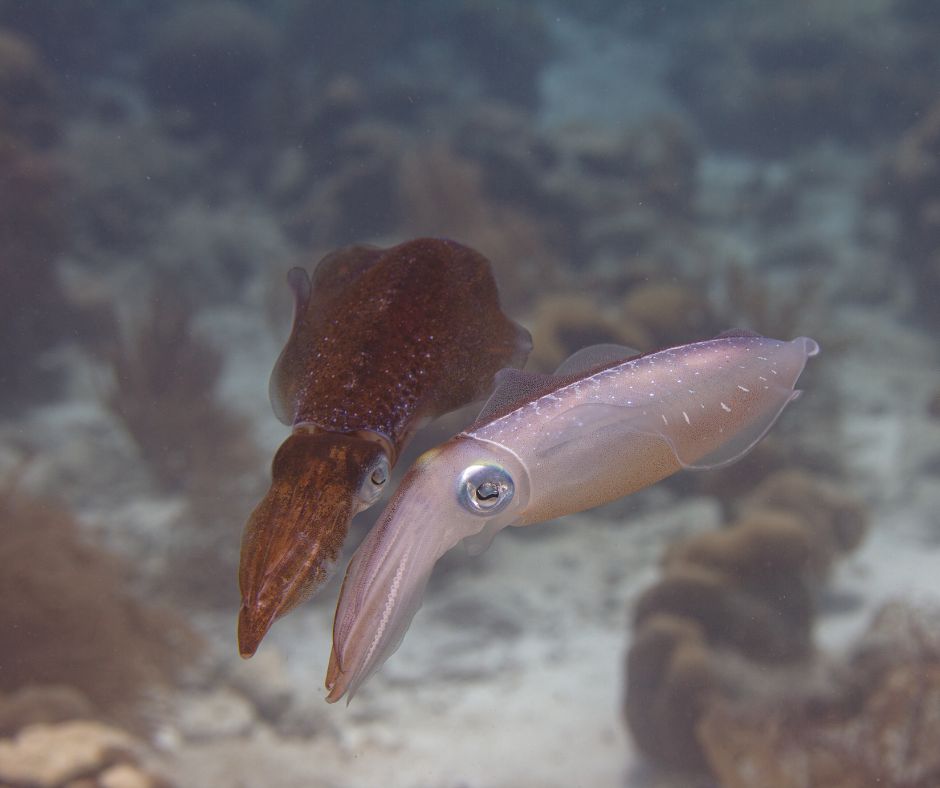
#9: The sacrifice of the Caribbean reef squid!
Caribbean reef squid are semelparous, which means that they die after a single reproduction episode. Female Caribbean reef squid lay their eggs in well protected areas and remain nearby to protect them. They die shortly after because the female doesn’t eat while looking after and protecting their eggs. However, the males will reproduce with multiple females before they die.
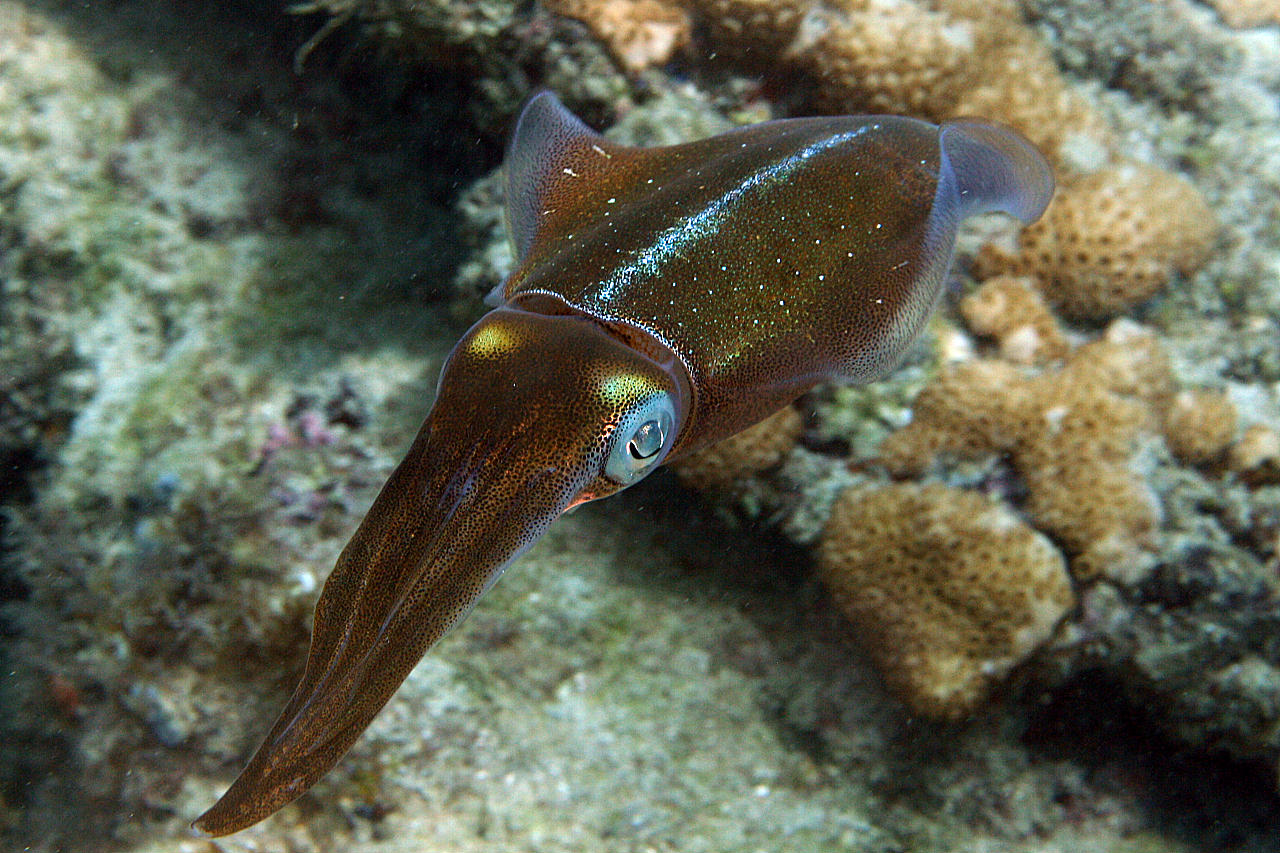
Caribbean reef squid are a fascinating species in a multitude of ways, from their color changing abilities to their reproductive and parenting characteristics. Although this species is not considered a threatened species, we should always do our best to look after their marine home so we can continue to learn more about them and their reef and seagrass habitats.
Additional Caribbean Reef Squid Resources:
1. Marine Bio – Reef Squid, Sepioteuthis sepioidea
2. IUCN – Caribbean Reef Squid
3. YouTube – Sepioteuthis sepioidea. Video credit: Karla Questel

